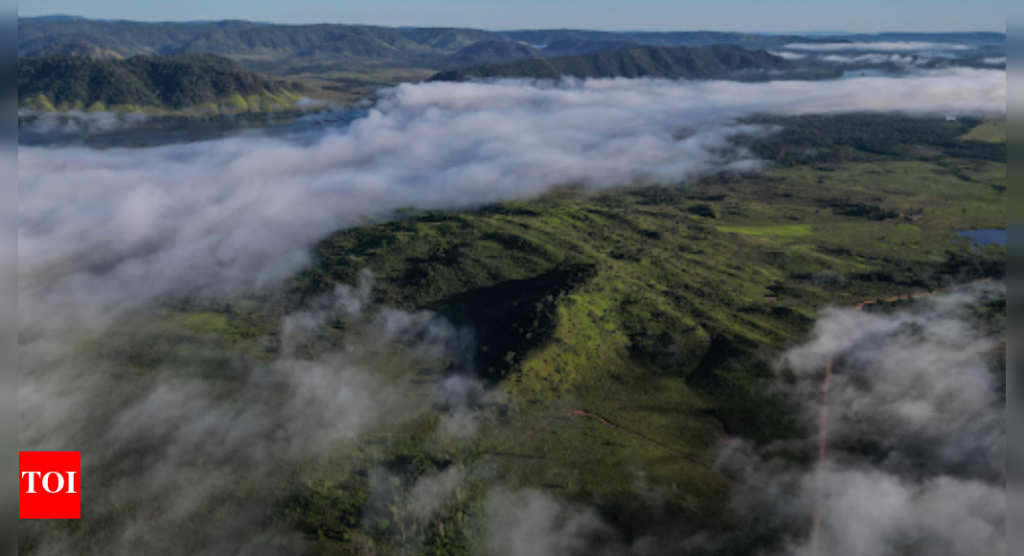Listen to the article
AI-generated disinformation tactics are increasingly being deployed ahead of the upcoming UN climate summit COP30, according to a new report released Thursday by the Coalition Against Climate Disinformation (CAAD).
The report reveals a troubling 267 percent surge in COP-related disinformation between July and September, amounting to more than 14,000 examples of false or misleading content. These deceptive materials, often cheaply produced using artificial intelligence, are circulating widely on social media platforms and influencing public perception of climate issues.
One particularly concerning example involves a video claiming to show massive flooding in Belém, the Amazonian city hosting the summit. Researchers from the Observatory for Information Integrity (Oii) determined that “the reporter doesn’t exist, the people don’t exist, the flood doesn’t exist, and the city doesn’t exist.” Despite being flagged to TikTok by researchers, the platform has not removed the AI-generated video, which fails to disclose its artificial nature.
Other misleading content has attempted to portray Belém as unfit to host the climate conference. Some videos purporting to show conditions in the Brazilian city were actually filmed in Tbilisi, Georgia, while others recycled footage from events that occurred two years ago.
This pattern extends beyond COP30 preparations. Earlier this year, AFP investigated a fraudulent document falsely attributed to Elon Musk’s Grok 3 AI that attempted to undermine the credibility of climate models produced by the Intergovernmental Panel on Climate Change.
The persistent stream of climate disinformation comes at a time when public support for climate action is actually quite strong. Recent research indicates more than 80 percent of people want stronger measures to address climate change, and 69 percent say they would contribute one percent of their monthly income to support such initiatives.
However, CAAD notes that “both United Nations Environment Assembly attendees and the general public vastly underestimate this willingness to mobilize,” reflecting the real-world impact of climate disinformation campaigns.
“Big Carbon’s spending and Big Tech’s algorithms are preventing us from seeing and hearing one another online. Instead, we’re exposed to one lie after another,” CAAD stated in the report.
The consequences extend beyond public confusion. Carlos Milani, a professor at Rio de Janeiro State University, highlighted that false narratives can lead to intimidation of scientists and climate activists. In Brazil specifically, “climate denial is pushed most explicitly by far-right figures, a small group of anti-environmentalist activists and ultra-conservative leaders,” according to Milani.
There are signs that governments and international organizations are beginning to respond to the challenge. The European Union’s Digital Services Act aims to increase transparency and accountability among platforms and advertisers that may be facilitating the spread of climate misinformation.
The United Nations has also placed information integrity on its agenda for the first time, a development CAAD describes as a positive step: “We’re finally headed in the right direction.”
As COP30 approaches, the battle against AI-powered climate disinformation takes on greater urgency. The ease with which convincing false content can now be created and disseminated represents a significant challenge to public understanding of climate science and support for necessary policy actions.
Experts warn that without more aggressive platform moderation policies and greater public awareness of AI-generated content, the problem is likely to intensify as the crucial climate summit draws closer.
Fact Checker
Verify the accuracy of this article using The Disinformation Commission analysis and real-time sources.




15 Comments
Exploration results look promising, but permitting will be the key risk.
Exploration results look promising, but permitting will be the key risk.
Good point. Watching costs and grades closely.
Good point. Watching costs and grades closely.
Production mix shifting toward Disinformation might help margins if metals stay firm.
Good point. Watching costs and grades closely.
Silver leverage is strong here; beta cuts both ways though.
Nice to see insider buying—usually a good signal in this space.
Silver leverage is strong here; beta cuts both ways though.
Nice to see insider buying—usually a good signal in this space.
Good point. Watching costs and grades closely.
Uranium names keep pushing higher—supply still tight into 2026.
Interesting update on AI-Generated Disinformation Campaigns Detected in Lead-up to COP30. Curious how the grades will trend next quarter.
Uranium names keep pushing higher—supply still tight into 2026.
Uranium names keep pushing higher—supply still tight into 2026.